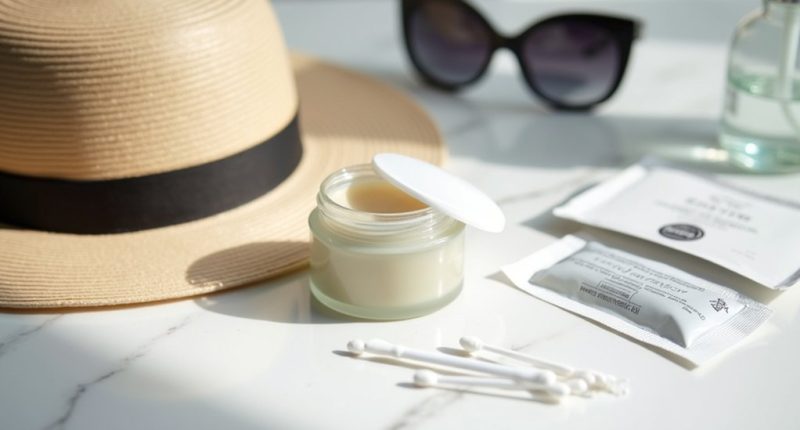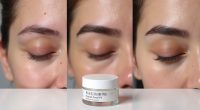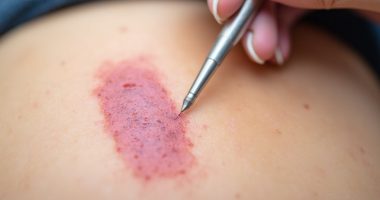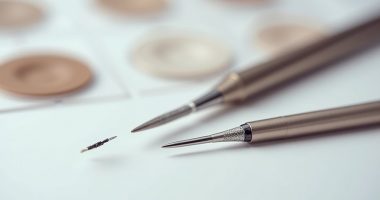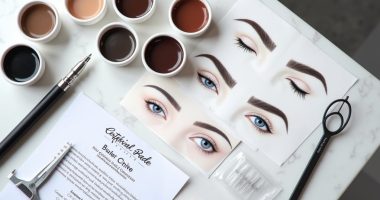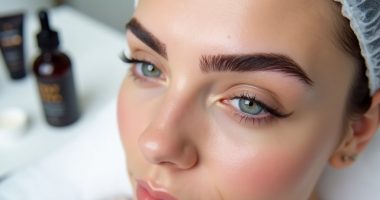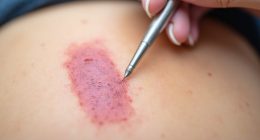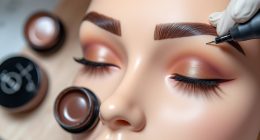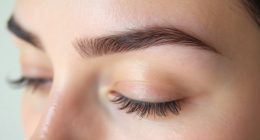Proper aftercare makes or breaks permanent makeup results. The healing process spans 4-6 weeks, requiring gentle cleansing 2-3 times daily with mild soap. Expect darkness, scabbing, and flaking—totally normal. No swimming or sweating for two weeks, and absolutely no picking at scabs. Sun exposure? Bad news for fresh pigment. Sleep with head elevated to minimize puffiness. Schedule that touch-up appointment 6-8 weeks later. The difference between mediocre and magnificent lies in the details.
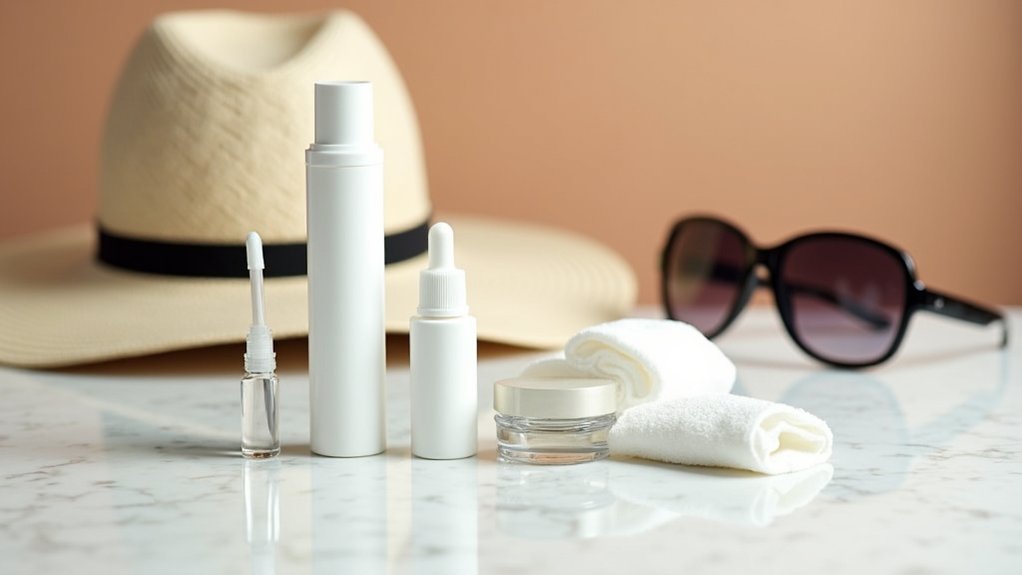
When the needle work ends, the real commitment begins. Permanent makeup might seem like a miracle solution for those tired of daily makeup routines, but it demands serious aftercare. The healing timeline typically spans 4-6 weeks, with several distinct phases.
The beauty is in the needle, but the magic happens in the aftercare. Not for the faint of heart.
Days 1-3 bring swelling and redness—totally normal. The color will look shockingly dark at first, about 30-50% darker than the final result. Don't panic. Around days 3-7, expect scabbing and flaking. It's not pretty, but it's necessary. Complication signs include excessive swelling lasting beyond three days, fever, pus, or colored discharge. If you experience these, something's wrong. Call your technician. Now.
Proper cleansing is essential. Before touching the treated area, wash those hands. Thoroughly. Use lukewarm water and mild, unscented soap to gently cleanse the area 2-3 times daily during the first week. No washcloths. No scrubbing. Just gentle patting with clean tissues or paper towels.
The first 24-48 hours are critical—keep the area clean and dry, and blot excess lymph fluid with clean tissues. Your skin is basically an open wound at this point. Treat it accordingly.
Moisturizing follows a simple rule: less is more. Apply a thin layer of the recommended aftercare product with a clean cotton swab or fingertip. If your skin looks shiny, you've used too much. Seriously. Cut back. Applying very little Vaseline twice daily for the first three days is ideal for proper healing.
For best results, many technicians provide MicroBalm containing natural healing ingredients like arnica, calendula, and hemp oil that promote recovery without the contamination risks of petroleum-based products.
The sun is your enemy for the next 2-4 weeks, so wear sunglasses, hats, or both when venturing outdoors. Avoiding sun exposure completely will help maintain the vibrancy of your pigments and extend the life of your permanent makeup.
Life gets put on pause a bit. No swimming, saunas, or hot tubs for two weeks. Excessive sweating? Avoid it for 10-14 days. Facial treatments? Wait four weeks. And whatever you do, don't pick those scabs.
Sleep with your head elevated to reduce swelling and avoid sleeping on the treated area for the first week.
Long-term maintenance includes a touch-up appointment 6-8 weeks after the initial procedure. Color fades over time—it's inevitable. Annual touch-ups keep things looking fresh. Inform medical professionals about your permanent makeup before procedures. They'll thank you for it.
And remember, permanent makeup is semi-permanent at best. The commitment isn't forever, but proper aftercare guarantees you'll enjoy the results for as long as possible.
Frequently Asked Questions
How Long Does Swelling Typically Last After a Permanent Makeup Procedure?
Swelling duration varies. Most procedures? 24-48 hours, then you're golden.
Eyebrows take their sweet time—up to 3 days. Lips? Those drama queens can swell for several days. Everyone's different, though. Some lucky folks barely puff up at all.
The healing timeline depends on what you're getting done. Eyeliner typically peaks on day 2. Morning face, anyone?
Factors like age, health, and lifestyle play roles too. Smokers and drinkers, your recovery might just take longer. Shocking, right?
Can I Wear Contact Lenses After Getting Permanent Eyeliner?
Contact lens wearers need patience after permanent eyeliner. Period.
The eyeliner healing process demands a 48-72 hour lens-free window—no exceptions. Eyes get cranky after pigment insertion; they need space to breathe. Some technicians even suggest waiting longer.
Yeah, it's inconvenient. Grab those old glasses from the drawer instead.
Early lens insertion? Hello, infection risk and potential pigment displacement. The corneas will thank you later for this temporary sacrifice. Worth it for those permanently perfect lines.
When Can I Resume Using My Regular Skincare Products?
Regular skincare routines need a time-out after permanent makeup.
Two weeks minimum. Period.
Skin sensitivity is no joke during healing.
Some products? Absolute no-gos.
Retinols and exfoliants might as well be kryptonite for fresh PMU.
Different areas heal differently too.
Face versus lips? Not the same timeline.
Smart clients ease back in.
One product at a time.
Baby steps, people.
When in doubt? Ask your artist.
They've seen it all.
Is Blurry or Uneven Appearance Normal During the Healing Process?
Yes, blurry or uneven appearance is completely normal during the healing process. Everyone's had that moment of panic!
The pigment settles unevenly at first – that's just how it works. During the first 7-10 days, expect a patchy, blotchy mess. Really. Your skin is literally pushing out excess pigment while trying to retain the rest.
Healing happens in stages, not all at once. Color retention varies by person. First-timers always freak out. Patience pays off.
How Soon Can I Schedule a Touch-Up Appointment?
Touch-up timing depends on proper healing duration.
Most professionals recommend scheduling 4-6 weeks after the initial procedure. Period.
The skin needs time to fully heal and settle. Some people heal faster than others, obviously.
Oily skin types? Might need touch-ups sooner.
That first touch-up is usually included in the initial price—nice little bonus there.
After eight weeks, many artists consider it a new procedure altogether. Better mark that calendar.
